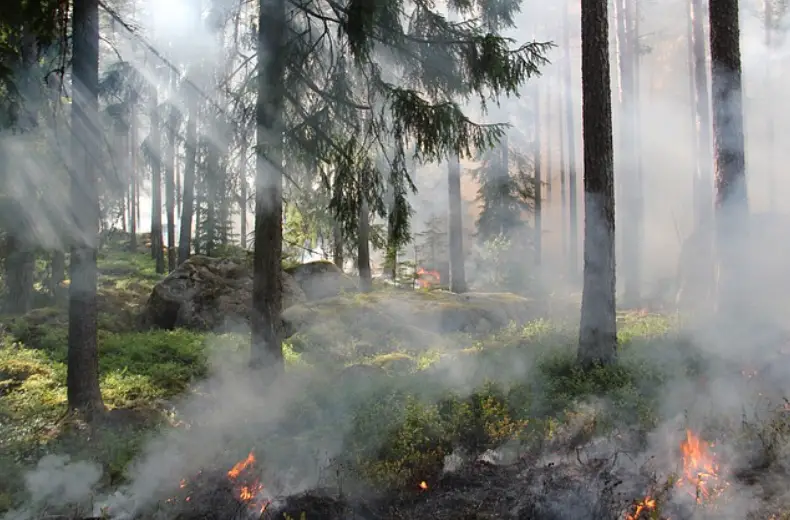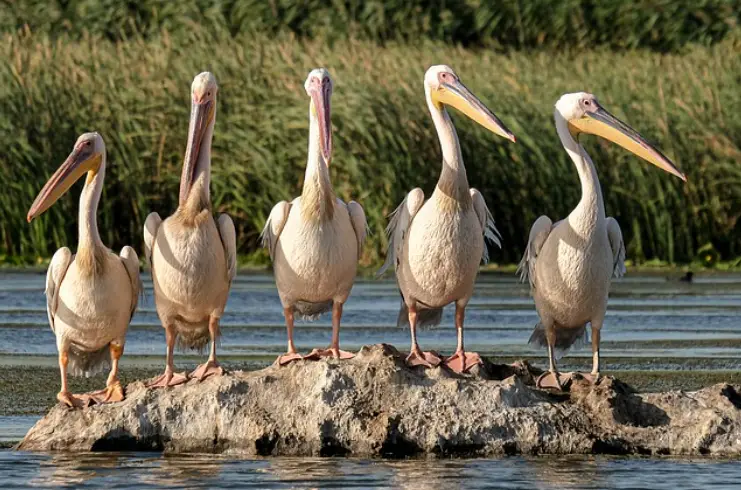The Role of Technology in Advancing Environmental Conservation

In our rapidly evolving world, the stark reality of environmental degradation is difficult to ignore. With alarming statistics indicating the rapid loss of biodiversity and the escalating impacts of climate change, one can’t help but ponder: Can technology be the lifeline that our planet desperately needs? As we delve into this exploration, we uncover the transformative power of technologies such as artificial intelligence (AI), data analytics, and upcycling. These innovations offer a beacon of hope, suggesting that perhaps, through technology, we can reverse the tide of environmental decline.
AI and Data Analytics: The Game Changers
The realm of AI and data analytics stands as a testament to human ingenuity, offering groundbreaking solutions to some of the most pressing environmental challenges. Imagine a world where AI-driven platforms can detect illegal deforestation activities in real-time, providing authorities with the crucial data needed to take immediate action. Such is the power of these technologies, which not only enable the monitoring of vast and remote areas but also offer predictive analytics to prevent future environmental violations. The potential of AI and data analytics to revolutionise conservation efforts is immense, offering a glimpse into a future where technology and nature coexist in harmony.
Specific projects leveraging AI have demonstrated significant impacts on conservation. For instance, platforms utilising machine learning algorithms to analyse satellite imagery have successfully identified illegal logging activities, leading to timely interventions. Moreover, data analytics has empowered researchers to track wildlife migration patterns, enhancing our understanding of animal behaviour and habitat needs. These technologies are not just tools; they are game-changers, offering insights that were previously beyond our reach and enabling actions that were once deemed impossible.
Upcycling: Turning Waste into Conservation Tools
In the innovative world of upcycling, waste is not seen as an end product but as the beginning of something new and valuable. Arthur Huang, CEO of Miniwiz, has pioneered this concept, transforming post-consumer waste into high-quality materials and products. This approach not only addresses the issue of waste management but also reduces the demand for new raw materials, thereby lessening the pressures on natural resources. Upcycling represents a significant shift in how we perceive and manage waste, turning it into a resource that contributes to environmental conservation.
Miniwiz’s work is a prime example of how upcycling can have broad environmental benefits. By converting waste into materials for construction, fashion, and more, the company is demonstrating that sustainability and innovation can go hand in hand. This not only reduces the environmental footprint of manufacturing processes but also inspires other industries to rethink their approach to waste. Upcycling is more than just recycling; it’s about creating a circular economy where every material is valued and nothing is wasted.
Digital Guardians of the Amazon
The Amazon rainforest, often referred to as the lungs of our planet, is under constant threat from deforestation and illegal activities. Sonia Guajajara, an indigenous Brazilian leader and environmentalist, has harnessed the power of technology to protect this vital ecosystem and its communities. Through the use of satellite imaging, drones, and other technological tools, Guajajara and her team are able to monitor the Amazon with unprecedented accuracy, identifying threats and mobilising efforts to combat them. This fusion of traditional conservation efforts with modern technology serves as a model for protecting natural habitats around the globe.
The use of drones, in particular, has been a game-changer for conservation in the Amazon. These unmanned aerial vehicles can cover vast areas, capturing detailed images that reveal the extent of deforestation, illegal mining, and other destructive activities. This real-time data is invaluable for indigenous communities and environmental organisations, enabling them to respond swiftly to protect their land. Moreover, the visibility provided by these technologies has raised global awareness about the plight of the Amazon, garnering international support for its preservation.

Innovations Beneath the Waves: Ocean Conservation Tech
The ocean, covering over 70% of our planet’s surface, is a critical component of Earth’s ecosystem. Yet, it remains one of the least explored and understood environments. Recent advancements in technology, however, are shedding light on the mysteries of the deep and offering new ways to protect marine life. Autonomous Underwater Vehicles (AUVs) and bioacoustic monitoring are at the forefront of these innovations, enabling scientists to explore the ocean’s depths and study its inhabitants like never before. These technologies are not only expanding our knowledge of marine ecosystems but also playing a crucial role in their conservation.
AUVs, for instance, have revolutionised ocean exploration. These robotic vehicles can dive to great depths, collecting data on water temperature, salinity, and marine life, which is essential for understanding the impacts of climate change on the ocean. Similarly, bioacoustic monitoring allows researchers to listen to the sounds of the sea, from the calls of whales to the crackling of ice. This acoustic data provides insights into the behaviour and distribution of marine species, informing conservation strategies and helping to protect endangered animals.
The Investors Fuelling Green Tech
Behind every technological innovation lies the support of investors who understand the potential of green technologies to transform our world. Sandrina Postorino, a corporate strategist and passionate environmentalist, is one such investor. As Managing Director of Trinity Ventures, Postorino has directed the investment portfolio toward high-growth Australian companies that contribute positively to society and the environment. Her strategic investments in environmental tech projects are not only fostering innovation but also paving the way for sustainable development. This approach highlights the critical role of investors in scaling conservation technologies and underscores the broader implications for our planet’s future.
Investing in green technologies comes with its own set of criteria and challenges. Investors like Postorino must navigate a landscape where the potential for impact is weighed against financial returns. The criteria for supporting environmental tech projects often include innovation, scalability, and the ability to address pressing environmental issues. These investments are crucial for bringing groundbreaking technologies from the lab to the market, where they can make a real difference in conservation efforts. The challenges, however, are significant, ranging from regulatory hurdles to market acceptance.
Empowering Communities Through Tech
At the heart of successful conservation efforts lies the empowerment of communities. Technology has emerged as a powerful tool in this regard, enabling both local and global communities to actively participate in conservation initiatives. From citizen science projects to digital platforms for environmental education, technology is democratising conservation, making it accessible to everyone. This shift is fostering a greater sense of responsibility and engagement among individuals, who are now able to contribute to the preservation of our planet in meaningful ways.
Citizen science projects, for example, leverage the power of crowdsourcing to gather data on biodiversity, pollution, and other environmental indicators. By involving non-scientists in data collection and analysis, these projects not only expand the scope of research but also educate participants about environmental issues. Similarly, digital platforms and apps provide resources and tools for individuals to learn about conservation, participate in campaigns, and make sustainable choices in their daily lives. This increased access to information and opportunities for involvement is crucial for building a more informed and engaged global community.
Navigating Ethical Waters
As we embrace technology in our quest for environmental conservation, it’s crucial to navigate the ethical waters that accompany its use. The deployment of technological solutions raises important questions about job displacement, privacy concerns, and the risk of overshadowing systemic changes needed for sustainable development. These ethical considerations must be addressed to ensure that the benefits of technology are realised without unintended consequences. A balanced approach to tech adoption in conservation efforts is essential, one that considers both the potential and the pitfalls.
Job displacement is a significant concern, especially in industries that are being transformed by automation and AI. While technology can enhance efficiency and effectiveness in conservation efforts, it’s important to consider the impact on local communities and traditional livelihoods. Similarly, the use of drones and satellite imaging, though invaluable for monitoring environmental changes, raises privacy concerns that must be carefully managed. Ensuring that technological interventions respect the rights and dignity of individuals and communities is paramount.
The Horizon of Conservation Technology
Looking to the future, the horizon of conservation technology is bright with promise. Experts predict a surge in breakthrough innovations, driven by continued investment in research and development. Emerging research areas, such as environmental DNA (eDNA) and genomics, are set to revolutionise our understanding of biodiversity and ecosystem health. As noted by a global community-sourced assessment, “Environmental DNA (eDNA) is being used by pioneering conservationists to collect a wealth of biodiversity data quickly and easily.” This is just one example of how technology is opening new frontiers in conservation.
The potential for technology to advance environmental conservation is vast. From AI and data analytics to upcycling and bioacoustic monitoring, the tools at our disposal are more powerful and diverse than ever before. These technologies are not only enhancing our ability to protect and preserve the natural world but also offering hope for reversing the trends of environmental degradation. The key to unlocking this potential lies in continued investment in innovation and a commitment to integrating technology into conservation strategies.
A Call to Action for a Sustainable Future
Throughout this exploration, we’ve witnessed the transformative power of technology in advancing environmental conservation. From AI-driven platforms monitoring deforestation to upcycling initiatives turning waste into valuable resources, the potential of technology to make a positive impact on our planet is undeniable. As we stand at the crossroads of environmental degradation and technological innovation, the choice is clear: we must harness the power of technology to protect and preserve our natural world.
This journey into the role of technology in conservation is not just an academic exercise; it’s a call to action. Each of us has a role to play in supporting technological initiatives that aim to safeguard our environment. Whether it’s through advocating for green tech investments, participating in citizen science projects, or simply staying informed about the latest innovations, our collective efforts can make a difference. The time to act is now, for the sake of our planet and future generations.
Together, we can leverage the power of innovation to create a world where technology and nature coexist in harmony, paving the way for a brighter, more sustainable future.
